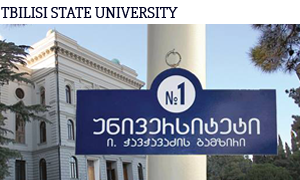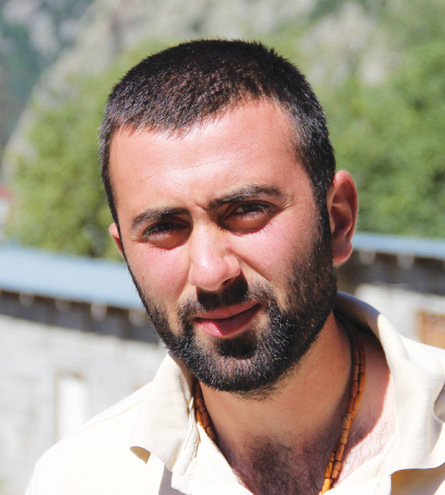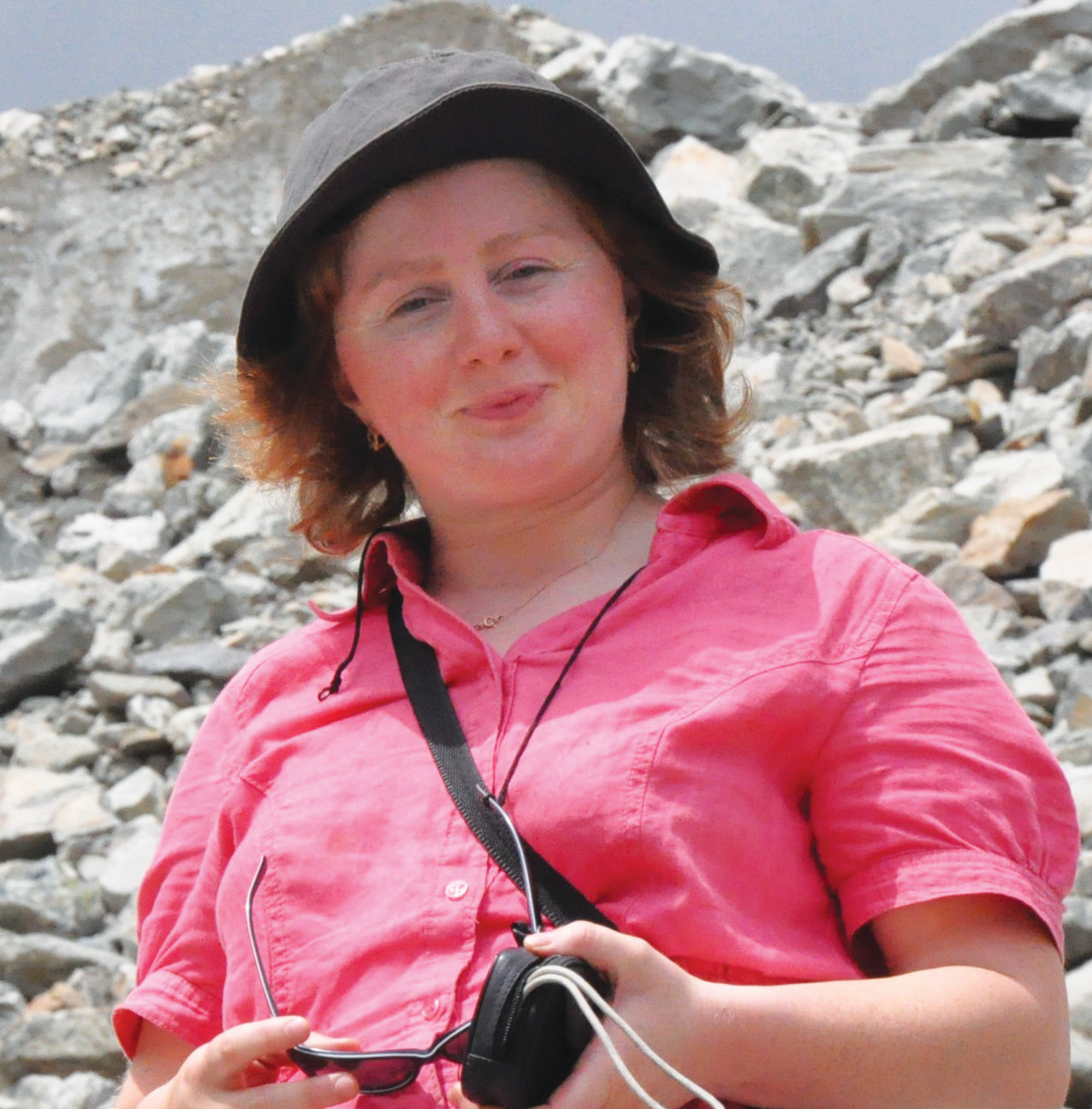
FACULTY OF EXACT AND NATURAL SCIENCES
Glaciers - Key Natural Resource and Climate Change Indicator
Glaciers are a unique part of the earth’s geographical sphere, where atmospheric precipitation accumulates and turns into solid ice. They are the greatest reservoir of fresh water on the planet and according to geographers they are Georgia’s most important natural resource. Today the attention of the whole world has turned to glaciers, and long-term complex studies are being carried out.
According to TSU researchers the history of glacier study in the Caucasus started in the 1930s and has continued at the Vakhushti Bagrationi Institute of Geography. Today this institute is still the only scientific institution in the South Caucasus that studies Caucasus glaciers.
For the last ten years the Institute has conducted a study entitled “Glacial geomorphology research of Caucasian glaciers against the background of modern climate change and glacial evolution in the Late Pleistocene and Holocene”, involving various projects. The research significantly intensified after the TSU geographers received an international grant-- “Dynamics of Glaciers in the Caucasus, Climate Changeability and Streamflow Modeling” (INTAS), England (2007-2009). The researchers continued their study in 2009 to 2011 with a grant from the Shota Rustaveli National Science Foundation, entitled “Monitoring Mass Balance of the Zopkhito Glacier against the Background of Climate Change”.
 From 2012-2013 research continued with a Presidential grant from the Shota Rustaveli National Science Foundation obtained by Levan Tielidze, Research Fellow at the Vakhushti Bagrationi Institute. The new project is entitled “Study of the Glaciers of the Tergi River Basin against the Background of Modern Climate Change: Paleo-Glaciological and Paleo-Geomorphological Reconstructions of the Late Pleistocene and Holocene”. Glacial geomorphology research studies glacier basins, the number of glaciers within the basins, dimensions, expositions, morphological types and studies of all geomorphological processes in the basin.
From 2012-2013 research continued with a Presidential grant from the Shota Rustaveli National Science Foundation obtained by Levan Tielidze, Research Fellow at the Vakhushti Bagrationi Institute. The new project is entitled “Study of the Glaciers of the Tergi River Basin against the Background of Modern Climate Change: Paleo-Glaciological and Paleo-Geomorphological Reconstructions of the Late Pleistocene and Holocene”. Glacial geomorphology research studies glacier basins, the number of glaciers within the basins, dimensions, expositions, morphological types and studies of all geomorphological processes in the basin.
Levan Tielidze, Project Manager, explained, “There were several glacial periods in the history of the earth, the last one occurring during the quaternary period. Both Pleistocene and Holocene were part of this period which was several millennia ago. In view of the tendency for climate change, the information obtained during our research will be interesting and important for our country as well as for the Caucasus region and the entire world, as our new information is being compared and harmonized with results of previous studies. Similar research will definitely be conducted in the future too, because glaciers are the best natural indicators of global warming,”
Project participant, Nino Lomidze, said, “In the process of the research we are conducting streamflow modeling, which means we study how much water flows as a result of glacier melting. The issue is especially important as Georgia’s larger rivers (Enguri, Rioni, Tskhenistskali, Tergi, Kodori, Bzipi, Aragvi, Liakhvi) depend on glacier melt. River level changes are defined by the intensity of ablation (melting). Knowing the daily variations of glacial waters is important for sectors such as alpinism and tourism as well as for the livestock breeding and other agricultural activity in alpine zones, and this information is critical for mountain populations who are at risk of glacial mudslides.
According to TSU geographers, the fact that Georgia’s hydro resources enable the country to export electricity leads to income generation, thus it is essential to pay attention to the issue of glacial streamflow when projecting hydropower plants. The construction of HPP cascades on rivers such as the Kodori, Enguri, Rioni, Tskhenistskali, and Tergi is made possible by such resources. Flooding, however, is also directly linked to melting glaciers.
In addition, TSU researchers believe the results of their research should be considered when selecting an area for Georgia’s Glacier Park or tourist-recreational areas. A Glacier Park is an area where permanent ice cover is necessary and where various types of tourism are planned and implemented. These can include amateur alpinism, extreme skiing or scientific tours. The plan to create a Glacier Park is quite realistic and the beautiful views can play an important role in drawing tourists to the alpine zones of Svaneti, Kazbegi, Racha and Abkhazia.
During research the Georgian geographers used new technology and programs, including with Geographic Information Systems (GIS) to create digital models of the glaciers to include all important resources of both the relief and the basin, and to create comprehensive databases. In the near future remote sensing research will be used for the first time in Georgia. Additionally, owing to the Campbell Automatic Weather Station installed on glaciers during expeditions, every 15 minutes the scientists could observe air temperature, relative humidity, pressure, wind speed and direction, solar radiation and glacier melting speed. Coordinates were fixed and glacier dynamics were defined through Global Positioning System (GPS) technology.
Levan Tielidze said, “The research carried out is unique because now a complete database and Georgia’s glaciological catalogue will be created as a result. Additionally we will map the dynamics of some glaciers near river basins. The methodology used in this research can serve as a model to ascertain the number of glaciers in Georgia, define their morphological types, observe the dynamics of glaciers, define the evolution of glaciers and determine other glaciological parameters. The Catalogue of Georgian Glaciers we are preparing will contain comprehensive data on Georgian glaciers. The new catalogue and data on fluctuations will be sent to the Switzerland-based World Glacier Monitoring Service and the World Data Centre for Glaciology in Great Britain. This information will also be published in scientific journals.” A famous geographer-glaciologist Ramin Gobejishvili, who led dozens of expeditions on various glaciers in the Caucasus and around the world, significantly contributed to carrying out the studies.
Working with Levan Tielidze other persons engaged in the research include Nino Lomidze, Master in Geography, Doctoral Candidate and Research Fellow at the Vakhushti Bagrationi Institute of Geography; Lasha Asanidze, Master in Geography, Doctoral Candidate and Research Fellow at the Vakhushti Bagrationi Institute of Geography; Lela Gardani, Master in Geography, Doctoral Candidate and Research Fellow at the Vakhushti Bagrationi Institute of Geography; Giorgi Latsabidze, Masters Student, Assistant at the Vakhushti Bagrationi Institute of Geography; Roman Kumladze, Masters Student, Assistant at the Vakhushti Bagrationi Institute of Geography. Most of these scientists have actively participated in previous studies as well.
The presentation of research has been held at several international scientific conferences and in publications, for example in 2011 an article about the research was published in a scientific journal with impact factor in Amsterdam: “Late Pleistocene (Wurmian) Glaciations of the Caucasus 2011, Quaternary Glaciations - Extent and Chronology, Developments in Quaternary Science, Amsterdam,The Netherlands.
A monograph entitled “Monitoring Glaciers against the Background of Climate Change” was published in a Tbilisi State University publication: http://geography.tsu.ge/index.php?id=337&lang=ge.
The TSU scientists say that their research is similar to that conducted in foreign countries, for example in 2008, when the World Glacier Monitoring Service collected information about the state of glaciers in mountainous countries, researchers from the Institute of Geography sent information about the state of glaciers on the Southern slope of Caucasus Mountains. TSU researchers systematically share information during the research with their foreign colleagues.
Several joint projects confirm the interest of foreign scientists for glacier research in the Caucasus. For example joint expeditions with Russian and German scientists-glaciologists were conducted in 2008 and 2009 respectively. In 2011 a joint expedition was conducted with Italian and Canadian glaciologists and documentary producers. A documentary shot during the joint expedition will be broadcast on TV channels Discovery and National Geographic US.





